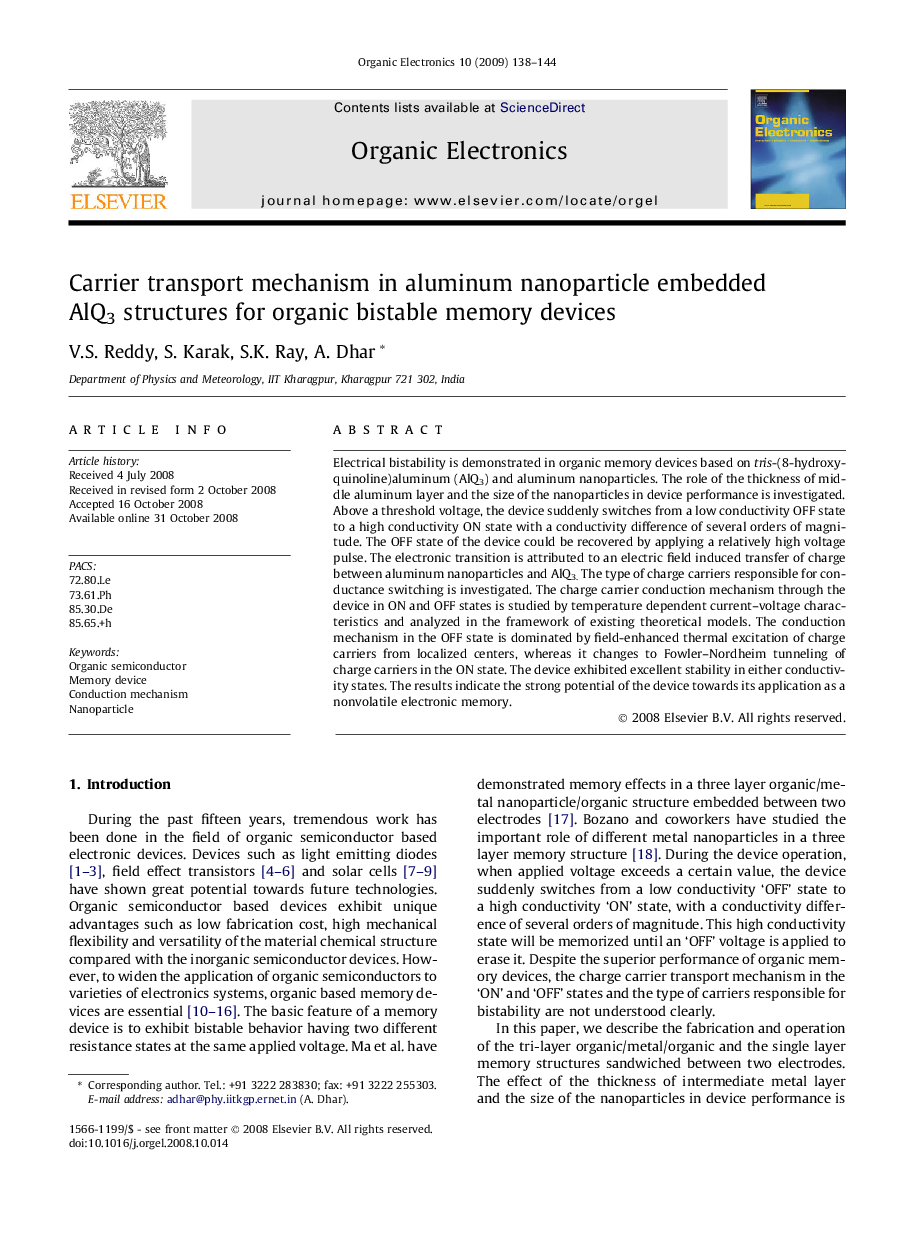| Article ID | Journal | Published Year | Pages | File Type |
|---|---|---|---|---|
| 1268278 | Organic Electronics | 2009 | 7 Pages |
Electrical bistability is demonstrated in organic memory devices based on tris-(8-hydroxyquinoline)aluminum (AlQ3) and aluminum nanoparticles. The role of the thickness of middle aluminum layer and the size of the nanoparticles in device performance is investigated. Above a threshold voltage, the device suddenly switches from a low conductivity OFF state to a high conductivity ON state with a conductivity difference of several orders of magnitude. The OFF state of the device could be recovered by applying a relatively high voltage pulse. The electronic transition is attributed to an electric field induced transfer of charge between aluminum nanoparticles and AlQ3. The type of charge carriers responsible for conductance switching is investigated. The charge carrier conduction mechanism through the device in ON and OFF states is studied by temperature dependent current–voltage characteristics and analyzed in the framework of existing theoretical models. The conduction mechanism in the OFF state is dominated by field-enhanced thermal excitation of charge carriers from localized centers, whereas it changes to Fowler–Nordheim tunneling of charge carriers in the ON state. The device exhibited excellent stability in either conductivity states. The results indicate the strong potential of the device towards its application as a nonvolatile electronic memory.
